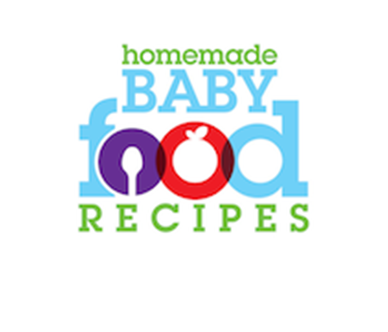Foods for a Baby With G6PD Deficiency
Introducing solids to a baby who has been diagnosed with G6PD Deficiency can be very nerve wracking.
However, making your OWN baby food allows you to know EXACTLY what’s in your little one’s meals, reducing much of the worry related to feeding a baby with this condition.
This page will help you identify the foods you should avoid and suggests those that are generally safe to offer.
IMPORTANT NOTE: This information does NOT constitute medical advice and you should always consult a medical professional before introducing new foods to your baby.
Although we have tried to be as thorough as possible, our list of foods to avoid in the diet of a G6PD deficient baby may not contain EVERY food that could act as a trigger.
Please also note that we cannot offer advice as to whether particular brands of commercially prepared infant formula or food – baby food or otherwise – are safe for an individual with G6PD Deficiency.
We recommend that you contact the manufacturers of commercially prepared foods for specific information regarding their suitability.
What is G6PD Deficiency?
Unless your child has been diagnosed with G6PD Deficiency, you’ve probably never heard of it before. Yet it is incredibly common – according to g6pddeficiency.org, around 600 million people worldwide are G6PD deficient.
G6PD Deficiency is a condition baby inherits – it cannot be ‘caught’. It is passed down by one or both parents. The condition is present in various ethnic groups, but is most common in those with Mediterranean heritage and in African Americans.
In areas of the world where G6PD Deficiency is common, babies are screened for the condition at birth (source: aafp.org – Diagnosis and Management of G6PD Deficiency).
G6PD stands for the enzyme ‘glucose-6-phosphate dehydrogenase’ – and individuals with G6PD Deficiency do not have enough of this enzyme in their bodies, or the G6PD they DO make isn’t functioning properly.
G6PD is critical to the normal function of red blood cells. Thus, G6PD Deficiency can lead to a condition called hemolytic anemia (a form of anemia caused by the destruction of red blood cells) when an affected individual is exposed to certain foods, infections or medications (collectively known as ‘triggers’).
These ‘triggers’ can cause unwelcome byproducts to accumulate in the body and damage red blood cells. Usually, the G6PD enzyme in the body PROTECTS the red blood cells from damage by these byproducts… but when an individual is G6PD deficient, that layer of protection is not there in sufficient quantity.
Subsequently, the individual begins to display the symptoms of anemia, which may include
- pale skin
- extreme fatigue
- rapid breathing
- rapid heartbeat
- jaundice (where the skin and eyes become yellow)
- enlarged spleen
- dark colored urine
Many people with G6PD Deficiency display no symptoms at all until AFTER the red blood cells have been damaged by one of the ‘triggers’….
- certain foods (particularly broad beans/fava beans, which are not only harmful to EAT but may also act as a trigger when merely touched)
- certain medications
- bacterial or viral infection
The good news is that – in most cases – removing the ‘trigger’ is all that’s needed to eliminate the symptoms, usually within a few weeks. Only rarely does G6PD Deficiency lead to chronic (ongoing) anemia.
As long as you take care to avoid the triggers, your baby should be able to lead a normal, healthy life.
How is G6PD Deficiency diagnosed and treated?
G6PD Deficiency can only be diagnosed by a medical professional, by means of a blood test.
Usually, no treatment is needed – avoiding the triggers is normally enough to prevent a crisis, or removing them is all that’s necessary to eliminate symptoms, because the body then starts to create new red blood cells naturally.
However, there is no cure for G6PD Deficiency and it is not a condition that can be ‘grown out’ of.
More about G6PD Deficiency ‘triggers’
Infections like Salmonella and E.coli can act as triggers for G6PD deficient individuals (source: aafp.org – Diagnosis and Management of G6PD Deficiency), so it is important to prepare your homemade baby food with scrupulous care, to avoid the growth of bacteria.
This includes the correct cooking, storage, and reheating of baby’s meals. Please visit our page: How to Safely Prepare Baby Food for more information.
By the same token, preparing your own baby food gives you the confidence to know that your little one’s food has been hygienically and safely prepared – another reason that we feel homemade baby food is absolutely ideal for babies with G6PD Deficiency!
In addition to infections, certain medications can act as triggers – you’ll find a very detailed list here.
So, too, can chemicals used in food preservation, such as sulfites (also spelled sulphites in some parts of the world) and artificial food colourings (we suggest some safe, natural food colourings here).
Sulfites are often found in:
- baked items, like cakes and cookies
- bottled lemon and lime juice
- frozen or canned fruits and veggies
- cornmeal and cornstarch
- crackers
- sauces like ketchup and mustard
- processed meat, like hot dogs and sausages
- dried fruits and veggies (including raisins)
- dried spices and herbs
- tea
- fish and shellfish
- fresh grapes
- jams, preserves and fruit pie fillings
- lettuce
- fruit and veggie juices
- prepared potatoes (like frozen fries, dehydrated potato)
- chips and candy
- prepared rice and noodle mixes
- soy products
- processed tomato (like tomato puree or tomato paste)
- vinegar
Despite the fact that G6PD Deficiency is so common, manufacturers of commercial food products are not required to state on their packaging whether the ingredients they contain are safe for someone with the condition.
Therefore, it can be very difficult to ascertain whether commercially prepared food is safe for your baby.
IF IN DOUBT, CONTACT THE MANUFACTURER FOR SPECIFIC INFORMATION.
Other foods to avoid if your child has G6PD Deficiency
In addition to the foods mentioned in the list above – which may contain sulfites – other foods that should be avoided, or only introduced under the guidance of your child’ doctor, are…
- Fava beans (also known as broad beans) and possibly ALL legumes (see note about favism below. You can see a detailed list of all legumes, with the various names by which they are known, here)
- Peanut butter (see note regarding legumes, above)
- Soy and soy products like tofu – soy does not affect all individuals with G6PD Deficiency, but you should certainly get the go-ahead from your doctor before introducing it to your baby.
- Blueberries (and products containing them, like blueberry yogurt)
- Bitter melon/melon gourd
- Some Chinese herbs (more information here)
- Artificial ascorbic acid
- Artificial food colour (particularly blue)
- Menthol (can be in certain candy and toothpaste)
- Artificial food preservatives
- Most prepared Chinese and Korean food (this is because it often contains sauces made with soy or bean paste)
PLEASE REMEMBER… This list may not contain every food that could act as a trigger for your child. Please speak to your doctor before introducing new foods to your baby.
Favism
Fava beans – also known as broad beans – can be deadly to someone with G6PD Deficiency, causing a severe hemolytic response called favism.
Everyone with favism is deficient in the G6PD enzyme, although not everyone with G6PD Deficiency has favism. In some people with G6PD Deficiency, eating broad beans may only cause a low level hemolysis (destruction of red blood cells).
Yet this is very harmful too…
…the symptoms may be so mild as to go unnoticed, but the continual, mild hemolysis can lead to problems like iron overload and memory dysfunction. It may also cause organs such as the heart, kidneys, liver and spleen to become overworked.
Although fava beans are the main culprit, other legumes may cause a similar problem.
Therefore, the introduction of ANY legumes to your baby should be thoroughly discussed with – and approved by – your doctor.
Best foods for a baby with G6PD Deficiency
Because the red blood cells are more prone to damage by oxidative substances in an individual with G6PD Deficiency, a diet rich in antioxidants is important.
Fruits (especially berries) and vegetables (especially beets) are good sources of antioxidants (with the exceptions of the triggers noted in the lists above).
Although they may, with your doctor’s consent, be introduced from 6 months of age, berries sometimes trigger allergic reactions (more information on our Strawberry Baby Food page).
So, whilst they are an excellent food choice for your child in the long term, it’s important to introduce them with care at first, observing the four day rule and watching carefully for any signs of allergic reaction.
Other good sources include barley, oats, garlic and ginger.
Organic foods are preferable when available, as they are grown without the use of chemicals that may be harmful to your child. This page on our site looks at which fruits and vegetables may be highest in pesticide residues.
Should I give my baby an iron supplement?
It is CRUCIAL that you speak to your doctor before giving ANY supplements to your baby – particularly iron supplements.
Hemolytic anemia can cause iron to be released into the bloodstream, so offering additional iron can cause baby’s levels to become dangerously high.
A healthy diet… a healthy future!
To summarize: a typically healthy diet – rich in fruits and vegetables (with the exceptions noted earlier in this article) – is best for your baby. This means also avoiding artificial ingredients – a wise move in the diet of ANY baby!
By making your own nutritious baby food using natural ingredients, you are giving your little one the best possible start!
Sources:
Other parents experiences…
The following page was written by the parent of a child with G6PD Deficiency and contains lots of comments from other parents. Please feel free to leave your own:
Baby Food and G6PD Deficiency – by Kristine in the Philippines


